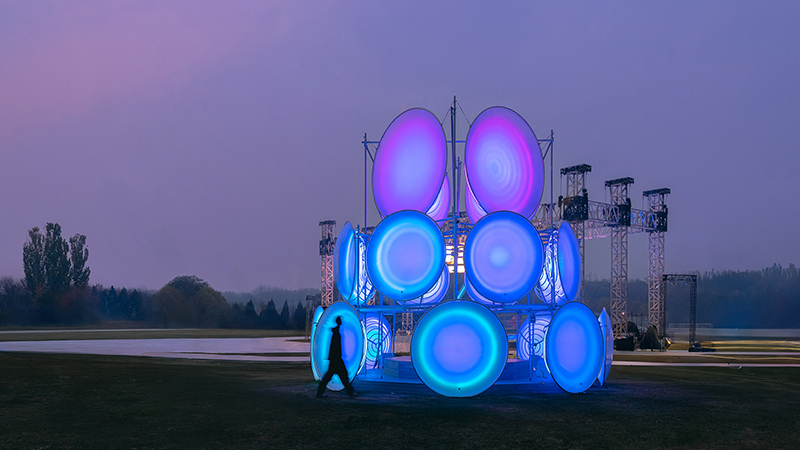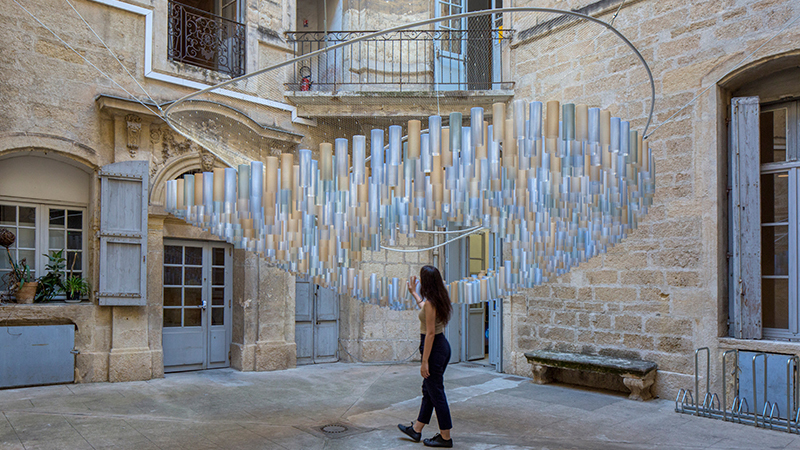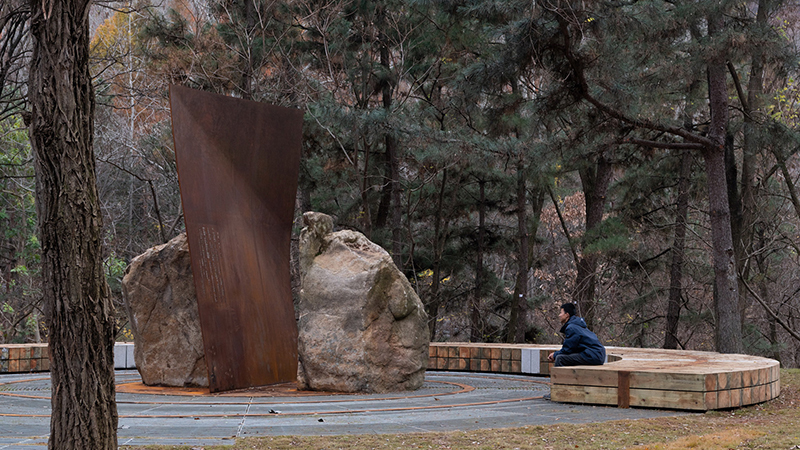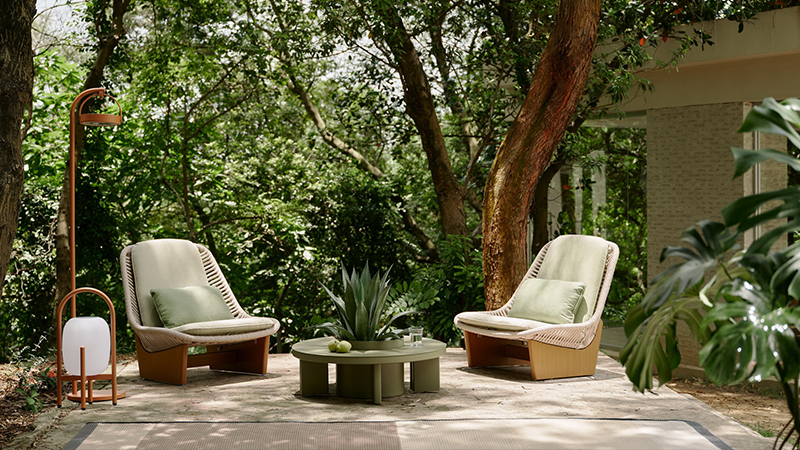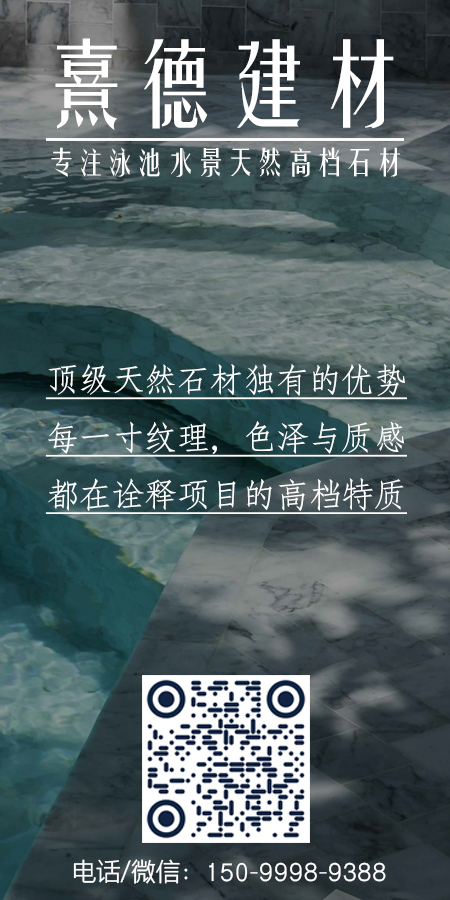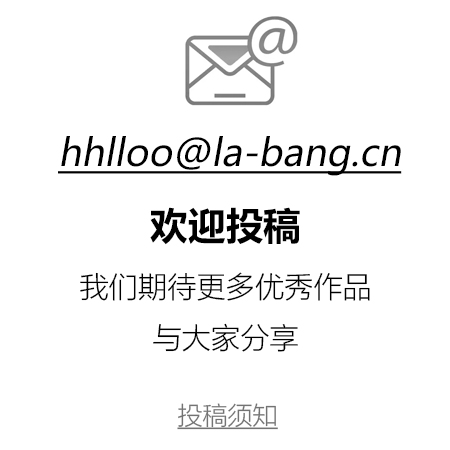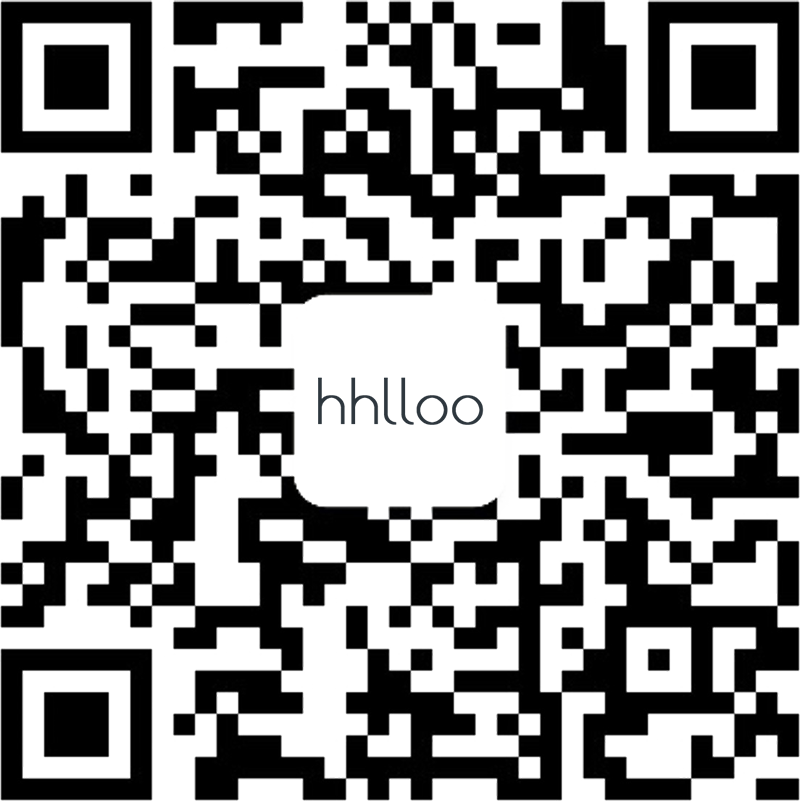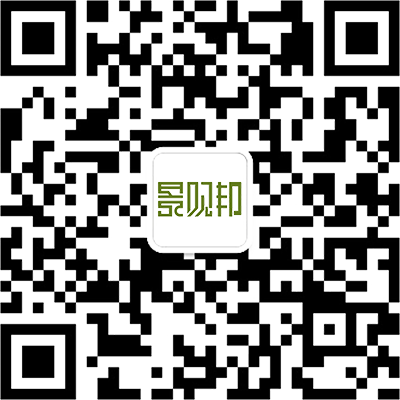大星吉子:织光城市,玩向未来
Daxing Jizi Design: City of Weaving Light, Adventuring Towards the Future
2025年6月11日,乐高®️“世界玩乐节”于上海西岸梦中心正式启动,全球四地同步开启城市玩乐模式。装置艺术家、大星吉子工作室创始人谢琼枝加入了乐高集团的“玩乐小队”,从孩子极具想象力的视角获得灵感,以乐高®️颗粒为构成基础,设计打造《织光乐园》(Woven Playground)公共艺术装置,探索“玩乐”如何有机地融入城市空间。
On June 11, 2025, the LEGO® World Play Day launched officially at Gate M, West Bund Dream Center, while putting four global cities in play mode simultaneously. Installation artist and founder of Daxing Jizi Design, Xie Qiongzhi, has been on board as one of the Playmakers of the LEGO Group. Inspired by how children see the world from an imaginative angle, she used LEGO bricks as the foundation to design and create the "Woven Playground" public art installation, thus exploring how "play" can be organically integrated into urban spaces.
▲ 《织光乐园》在上海西岸梦中心首次亮相
“Woven Playground” debuted at Shanghai West Bund Dream Center.
装置以立体织网结构构成,色彩鲜明、层次丰富,观众可自由穿行其中,也可通过跳跃触发“按钮”,激活声光反应,在沉浸式体验中感受一个充满奇想的“玩乐城市”。
The installation is structured with a three-dimensional woven network, featuring bright colors and rich layers. Audiences can freely walk through it and activate the sound and light responses by jumping and triggering "buttons"; in this way, they can experience an imaginative "play city" in an immersive setting.
▲ 色彩层次与空间动线共同营造沉浸体验
An immersive experience shaped by layered colors and fluid spatial design.
Part 1: 回归本真,玩乐精神
Returning to Innocence, Activating the Spirit of Play
1959年,康斯坦特在一篇名为“即将到来的伟大游戏”的文章中,发表了他对未来城市的设想。点站结合的巨大结构,错落交织的功能空间,激发身体释放感官,这个被称为“新巴比伦”的乌托邦社会,正是在设想一个掘弃功能实用主义,寻求变化和游戏的城市。
In 1959, in an article titled "The Great Game to Come," the Dutch visual artist Constant Nieuwenhuis illustrated his vision for cities in the future. In his utopian society called "New Babylon", he envisaged a city that abandons functional utilitarianism and strives for ultimate changes and play: in this utopia, there would be vast structures combining stations, functionally interconnected spaces that stimulate the body and release the closed senses.
在今天,娱乐方式变多了,城市中的“玩乐”空间是否像康斯坦特所设想般的拥具想象力?属于人类的的游戏精神又应该如何回归创造?在大星吉子以往的设计实践中,城市也始终是他们持续探索的核心议题。“织光乐园”期待在城市中创设一座可变的结构体,一个人与人相遇、协作、共同创造的舞台。
Today’s entertainment options have become various, but have "play" spaces in the city eventually become as imaginative as Nieuwenhuis envisioned? How should the human spirit of play return to the act of creation? In Daxing Jizi's past design practices, the city has always been a core topic of their everlasting exploration. "Woven Playground" aims to create a flexible structure in the city, a stage where people can greet, collaborate, and create sparkles together.
▲ 成为“协作舞台”的《织光乐园》装置
The installation functions as a collaborative stage.
不限年龄、不设门槛,只要靠近它,就能直观感受到“玩乐”的魅力。“无论是大人还是小孩,我们都希望他们能够走进这个空间,在其中激发新的灵感与创造力。”在主创团队看来,当下的城市公共空间中,普遍缺乏真正属于“玩乐”的场域。太多被理性秩序与功能规则所填满的空间,正在逐渐抹去人们最宝贵的“玩心”与想象力。
Unbounded by age limitations and other barriers, one can directly feel the charm of "play" as soon as one approaches the installation. "Whether being adults or children, we hope they can freely enter this space and thus be inspired by these new ideas and creativity." According to the designers, there has always been a general lack of spaces truly dedicated to "play" in today's urban public spaces. Too many spaces are filled with rational order and functional rules, gradually erasing people's most valuable spirit of "playfulness" and imagination.
▲ 儿童观众沉浸式玩乐中
Children engage in playful, immersive interaction.
“织光乐园”的设计正是从本能与直觉性出发,装置主体上延伸出六组跳跃“按钮”, 观众踏上“按钮”跳跃即可触发灯带与声音的响应机制。这种触发机制并非单纯为了互动效果,而是一次有意识的回归,将理性化、功能化的城市空间,重新交还给人类身体的律动感。声音部分则选用像素游戏中的8-bit电子乐片段,简单的旋律跨越世代,唤起共通的童年记忆与玩乐情感。
The design of "Woven Playground" is based on the instinct and intuition of human beings. Six sets of jumping "buttons" extend from the main body of the installation. Audiences can trigger the response mechanism of the light strips and sounds by stepping on the "buttons" and jumping. Such a triggering mechanism is not solely built for the sake of interactive effect, but for a return of deliberation: urban spaces that are rationalized and functionalized are given back to the rhythmic sense of the human body. The acoustic design adopts 8-bit electronic music fragments from pixel games, evoking shared childhood memories and playful emotions through simple melodies that transcend generations.
▲ 身体动作成为玩乐的媒介
Bodily movement becomes a medium for play.
▲ 跳跃触发按钮,点亮灯带并激活声音
Jumping activates buttons, illuminating LED strips and triggering sound.
Part 2: 编织城市,玩味色彩
Weaving the City, Playing with Colors
“编织”是大星吉子近年来在创作上一直思考与探索的表现方式。作为人类最古老的手工艺之一,编织既是一种技术,也是一种指尖的运动。从家中女性的手艺获得灵感,大星吉子创始人谢琼枝在过去几年开启了“编织城市”的系列创作,恰恰是希望在由理性、规则主导的城市中加入柔软的女性元素。“我觉得编织的千变万化,本身就蕴含着丰富的艺术创造力。而当这种手工语言被放大、嵌入城市尺度时,传统与现代、柔软与坚硬、变化与固定之间的张力,也随之被放大,产生出一种强烈的冲突与对话感。”
"Weaving" is a form of expression that Daxing Jizi Design has been contemplating and exploring in their creations in recent years. As one of the oldest crafts, weaving is both a technique and a choreography of the fingertips—an ancient rhythm passed down through generations. Inspired by domestic handicrafts, Daxing Jizi's founder, Xie Qiongzhi, initiated the "Weaving City" series of creations over the past few years, envisioning a gentler, more feminine softness woven into the rigid, rule-bound structures of modern cities. "I think the ever-changing nature of weaving inherently contains rich artistic creativity. And when this handmade language is magnified and embedded into the scale of urban cities, the tension between tradition and modernity, softness and hardness, change and stability is also magnified, creating a strong sense of conflict and dialogue."
 |  |
▲ “织光乐园”概念设计稿
Concept sketch of “Woven Playground”
本次“织光乐园”的设计同样汲取自编织物的纹样结构,以交叉的像素点构建模块化颗粒,通过立体化的“编织”方式拼合成装置整体。团队在此基础上特意保留了连接处的“留空”缝隙,使装置如织物般具有松弛感与呼吸感。纵横交错的孔洞不仅为身体的跃动提供了多方向的介面,也为参与者带来了更多探索路径与互动可能。
This very philosophy underpins the design of "Woven Playground", an immersive installation that reimagines woven textiles as luminous, architectural forms. Inspired by the pixelated patterns of fabric, the structure is composed of interlocking modular units—three-dimensional pixels that emulate the layered logic of weaving. Unique to this installation, however, are the intentional “breathing gaps” between components, which lend a sense of looseness and flexibility, as if the structure itself inhales and exhales with the city. The porous, lattice-like form invites movement from all directions, opening up a multitude of pathways and perspectives. It’s not just a space—it’s an invitation to explore, interact, and play.
▲ 具有呼吸感的编织物纹样结构
Woven patterns with a sense of breathing.
与此同时,“光”也被视作编织的一部分。灯光交互系统嵌入编织条中,参与者通过触发“机关”唤起不同光带的流动。当夜幕降临,点亮的灯带以流动、叠加与渐变的方式编织出一场节奏鲜明的光影演出。大星吉子的设计团队认为:“在编织的概念中,连接是最重要的一环。正是这种互动,让人产生一种即时参与、共同编织的感受。”光,不仅是物理意义上的照明手段,更成为连接城市记忆与人际情感的媒介。
Equally essential to this woven narrative is "light". The lighting interaction system is embedded in the woven strips, and participants can trigger the flow of different light bands by activating the sensors. As dusk settles, the lit light bands weave a rhythmically distinct performance in a flowing, superimposed, and gradient manner. The designers believe that "in the concept of weaving, connection is the most important point. The interaction makes audiences feel a sense of immediate participation and collaborative weaving." Light is not only a means of illumination in the physical sense but also a medium for connecting urban memories and interpersonal emotions.
▲ 夜幕中的装置灯光交互,编织一场城市舞台的表演
Nighttime lighting interactions create a performative urban stage.
在色彩策略上,装置融合了“同色系渐变 + 高饱和撞色”的设计逻辑。蓝色渐变强化了结构内部的节奏与统一感,使整个空间在连续拼接中呈现出有机韵律;而高饱和撞色则集中应用于砖块与灯光的界面关系之中,进一步增强了夜间光效下虚实之间的界限感,也赋予结构在不同视角下多重层次的视觉体验。
In terms of color, the installation integrates a gradient of similar colors and high-saturation contrasting colors. A base of tonal blue gradient enhances the rhythm and unity within the structure, creating an organic rhythm that flows continuously. At the same time, high-saturation contrasting colors are concentrated in the interface relationship between bricks and lights, further enhancing the sense of boundary between virtuality and reality under the nightfall light effect and transforming the installation into a vibrant spectacle from every angle.
▲ 色彩渐变与高饱和撞色并置
Gradients and high-saturation contrasting colors coexist dynamically.
Part 3: 欢迎加入,玩向未来
Welcome On Board, Playing Towards the Future
城市规划不仅关乎秩序与功能,更承载着大胆想象的责任。在“织光乐园”的构想中,人们被邀请参与一场没有标准答案的“城市游戏”,以身体、色彩与光线为媒介,共同编织出一座可以玩、可以梦的城市。如同康斯坦特曾设想的“新巴比伦”,这是一个为“游戏中的人”而设计的城市片段,一种试图打破日常规范的空间提案。
Urban planning is not only about order and function, but also carries the responsibility of bold imagination. In the concept of "Woven Playground," people are invited to participate in a "city game" with no standard answers: using body, color, and light as media to jointly weave a city that can be played in and dreamed of. Responding to Nieuwenhuis's envisioned "New Babylon," this episode presents a city designed for "people in play," a spatial proposal that seeks to break daily norms.
而对大星吉子来说,作品除了作为艺术装置呈现外,更是一次城市空间与公共艺术的深度对话:它唤醒被制度与秩序压抑的想象力,为日常生活引入开放、参与、流动的可能。
For Daxing Jizi Design, the work, presented as an art installation, is also a deep conversation between urban space and public art. It awakens the imagination suppressed by systems and order, introducing the possibilities of openness, participation, and fluidity into daily life.
▲ 公共场域中的协作与即兴,生成超出预设的场景
Collaboration and improvisation in public space generate unforeseen scenes.
此次通过与乐高积木的合作,大星吉子也获得了具有创造性的实践基础。作为一种富有模块性与延展性的设计语言,乐高颗粒不仅带来了材料层面的可能,也与设计本身“开放系统”的理念形成呼应。
The LEGO Group provided a creative and practical foundation for the creators. As a design language that is rich in modularity and scalability, LEGO brick system not only brings possibilities at the material level but also echoes the concept of design as an "open system."
 |  |
▲ 用乐高砖块搭建的“织光乐园”模型
LEGO model of “Woven Playground”
诚如乐高集团始终强调的,“玩乐不是特权,而是每个孩子应有的权利。”在尺度上,“织光乐园”特别为儿童设计了专属高度,以他们的视角重新定义城市空间。这不仅体现了对儿童身体行为的尊重,也传达了一个更深层的理念:在公共艺术的体验中,儿童也应拥有完整而平等的参与权。跳跃按钮的高度、触发机制与安全半径,皆基于儿童的身体能力与行为节奏进行设定,使他们无需依赖成人辅助,便能自主完成一场点亮城市的互动游戏。
As the LEGO Group has always emphasized, "Play is not a privilege, but a right that every child should have." In terms of scale, "Woven Playground" is specially designed with a dedicated height for children, redefining urban space from their perspective. This not only reflects respect for children's physical behavior but also conveys a deeper concept: in experiencing public art, children have full and equal rights to participate. The height of the jumping buttons, the triggering mechanism, and the safety radius are all set based on children's physical abilities and behavioral rhythms, allowing them to independently complete an interactive game that lights up the city without relying on adult assistance.
▲ 以儿童视角作为设计的尺度标准
Design scale informed by a child’s perspective.
装置落地后,催生出的“玩乐”氛围不仅感染了许多周边观众,也为大星吉子带来了新的启发,许多未被预设的行为,反而成为作品最生动的部分。“比起大人,孩子更懂得怎样玩。”一位观众的评论让大星吉子深受触动。成年人往往在成长中不自觉地掩藏了“玩心”,但正是这些未经设计、却能激发挑战与幻想的空间,构成了真正有生命力的城市体验。公共艺术不应只是“看”的对象,而应该成为一场可以加入、可以参与、可以共创的城市事件:当人们跃跃欲试地走入其中,这才是作品最完整的模样。
After the installation was launched, the resulting playful atmosphere not only affected many surrounding viewers but also brought new inspiration to Daxing Jizi Design. Many unpredictable behaviors became the most vivid expression of the work. A viewer's comment, "Children know how to play better than adults," deeply touched the designers. Adults often unconsciously forget the powerful of play. Still, when they encounter such an art installation, their imagination and will to challenge rise. It's a vibrant urban experience to witness. Public art should not just be an object to look at but become an urban event that can be participated in and co-created: when people keenly walk into it, that is the complete appearance of the work.
▲ 装置吸引行人观看、互动,作品在参与中被“完成”
The installation invites pedestrians to watch and interact, completing the work through participation.
项目图纸 Design Drawing
▽装置结构Installation Structure
 |  |
▽装置平面图Plan
项目信息
项目名称:乐高® “世界玩乐节” – 《织光乐园》公共艺术装置
设计单位:大星吉子
主创设计:谢琼枝
设计团队:曾镇威、陈滢潇、张旭斌
结构顾问:和作结构
、田方方
宣传支持:严欣然、徐靖宛
项目委托方:乐高集团
面积:126.36平方米
项目地点:上海
完工时间:2025.6.11
展期:2025.6.11 – 2025.7.27
Project Title: LEGO® World Play Day - "Woven Playground" Public Art Installation
Architects: Daxing Jizi Design
Lead Designer: Xie Qiongzhi
Key Team Members: Zeng Zhenwei, Chen Yingxiao, Zhang Xubin
Construction Consultant: AND office
Photographs: ZHANG Chao, TIAN Fangfang
Promotion Support: YAN Xinran, Tsui Chinguen
Client: The LEGO Group
Area: 126.36 m²
City: Shanghai
Country: China
Year: June 11, 2025
Exhibition Duration: June 11, 2025 – July 27, 2025
更新日期:2025-09-09 16:08:32
非常感谢 大星吉子设计 带来的精彩项目, 查阅更多Appreciations towards Daxing Jizi Design for sharing wonderful work on hhlloo. Click to see more works!



























